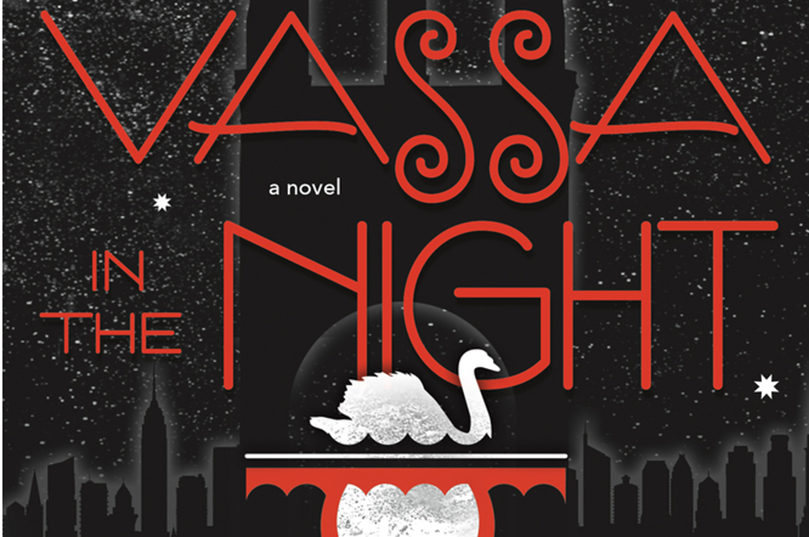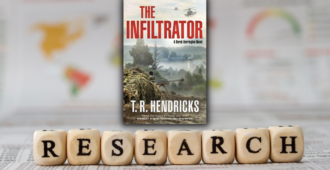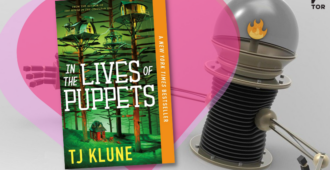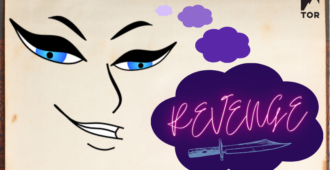 And now, a few unsettling words from Sarah Porter, the author of Vassa in the Night.
And now, a few unsettling words from Sarah Porter, the author of Vassa in the Night.
The baby wakes everyone with an ungodly yowl in the depths of the night. Its head looks distended, its eyes bulbous and glowering. Surely it didn’t appear so grotesque when you sang it to sleep? And that cry: it hardly sounds human at all.
Conversely, the baby is so silent that you rush to its side, terrified that it might have died while you dreamed. It gawps at you with an expression morose and wooden. Its tiny limbs feel dry, airy, and rotten. But those eyes, bulging, pale, at once vacant and horribly knowing: they never leave your face, not while you change its diaper and tuck it in again, not while you croon at it, Sleep tight, my poppet, all is peaceful, all is well, and back out of the nursery. You can barely force yourself to switch off the light.
Feed it, and it will suck so ravenously that you will thrust it away in sudden dread, sure that it means to drain your blood once it has finished your milk.
What is this thing that lies in your cradle? Is it truly your own sweet child?
Anyone familiar with the ways of the world will tell you, Why, no. Your child has been stolen by the faeries. They have left you this hideous effigy in its place.
The folklorist Charles G. Leland wrote that the faeries who steal children are personified fevers, the spirits of pox and typhus and cholera that snatched so many infants in the days before antibiotics. There are other connections between faeries and the land of the dead: one is the well-known rule that eating anything in either Faerie or Hades will trap you there forever. Catherynne Valente called the law permitting human-stealing “the Persephone clause” in her Fairyland books. And the medieval English poem Sir Orfeo, a retelling of the myth of Orpheus and Eurydice, makes the association even more explicit. In it, the harpist has to rescue his wife not from the underworld but from the faerie king, who holds his court in the midst of a field of butchered, but still living, bodies: people wrongly believed to be dead when they were actually transported to his realm.
Take another look, then, at that monstrous, babyish lump staring at you with such resentment. Are you sure it’s even there? Are you sure you aren’t remembering your lost child, however imperfectly; that your longing has not made this projected memory appear as something solid and alive? The changeling’s distorted features are a bit too much like the warped and uncertain faces that those we love wear in dreams: He didn’t look anything like you, but I knew it was you anyway. And could anything living, truly living and present in the room with you, be quite so hungry? Only ghosts, monsters, or memories consume so much of us.
One traditional way to get rid of a changeling is to subject it to sadistic abuse. In theory, its otherworldly parents will be so appalled that they will remove it from your custody, and return your rightful child. I wouldn’t count on it, personally.
The other method is to make the changeling laugh. Brew coffee in an eggshell, say; the creature will betray its real nature by cackling in surprise, and once exposed, protocol demands that it go.
That’s what the stories say. In practice, your changeling might stay right where it is, and keep on laughing at you. The one you mourn was taken, like Eurydice was taken, and like her will not be returning. What laughs in the cradle is your own swollen, relentless, and insatiable grief; that is what the faeries leave behind.
Follow Sarah Porter on Twitter and on her website.












